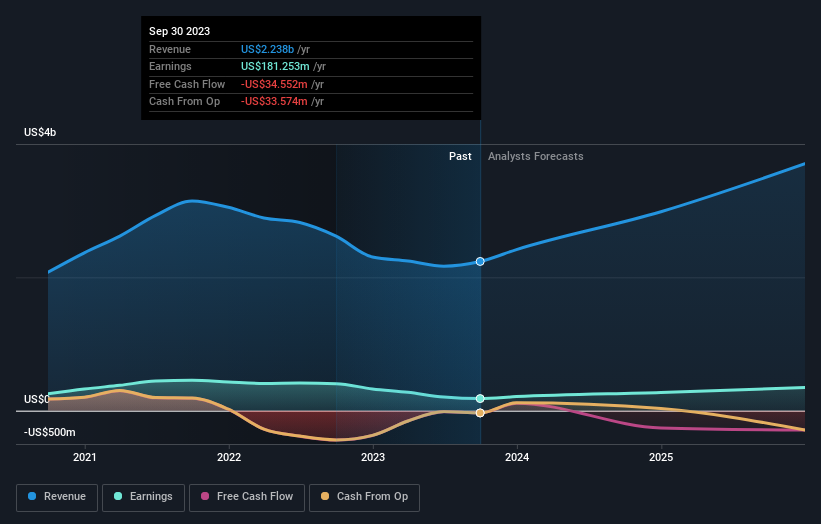- United States
- /
- Consumer Durables
- /
- NasdaqGS:LGIH
At US$125, Is It Time To Put LGI Homes, Inc. (NASDAQ:LGIH) On Your Watch List?

LGI Homes, Inc. (NASDAQ:LGIH), is not the largest company out there, but it saw a significant share price rise of 47% in the past couple of months on the NASDAQGS. Shareholders may appreciate the recent price jump, but the company still has a way to go before reaching its yearly highs again. With many analysts covering the mid-cap stock, we may expect any price-sensitive announcements have already been factored into the stock’s share price. However, what if the stock is still a bargain? Let’s examine LGI Homes’s valuation and outlook in more detail to determine if there’s still a bargain opportunity.
See our latest analysis for LGI Homes
What's The Opportunity In LGI Homes?
LGI Homes appears to be expensive according to our price multiple model, which makes a comparison between the company's price-to-earnings ratio and the industry average. We’ve used the price-to-earnings ratio in this instance because there’s not enough visibility to forecast its cash flows. The stock’s ratio of 16.31x is currently well-above the industry average of 11.15x, meaning that it is trading at a more expensive price relative to its peers. If you like the stock, you may want to keep an eye out for a potential price decline in the future. Since LGI Homes’s share price is quite volatile, this could mean it can sink lower (or rise even further) in the future, giving us another chance to invest. This is based on its high beta, which is a good indicator for how much the stock moves relative to the rest of the market.
What kind of growth will LGI Homes generate?

Investors looking for growth in their portfolio may want to consider the prospects of a company before buying its shares. Buying a great company with a robust outlook at a cheap price is always a good investment, so let’s also take a look at the company's future expectations. LGI Homes' earnings over the next few years are expected to increase by 81%, indicating a highly optimistic future ahead. This should lead to more robust cash flows, feeding into a higher share value.
What This Means For You
Are you a shareholder? LGIH’s optimistic future growth appears to have been factored into the current share price, with shares trading above industry price multiples. However, this brings up another question – is now the right time to sell? If you believe LGIH should trade below its current price, selling high and buying it back up again when its price falls towards the industry PE ratio can be profitable. But before you make this decision, take a look at whether its fundamentals have changed.
Are you a potential investor? If you’ve been keeping an eye on LGIH for a while, now may not be the best time to enter into the stock. The price has surpassed its industry peers, which means it is likely that there is no more upside from mispricing. However, the positive outlook is encouraging for LGIH, which means it’s worth diving deeper into other factors in order to take advantage of the next price drop.
With this in mind, we wouldn't consider investing in a stock unless we had a thorough understanding of the risks. Case in point: We've spotted 2 warning signs for LGI Homes you should be mindful of and 1 of these can't be ignored.
If you are no longer interested in LGI Homes, you can use our free platform to see our list of over 50 other stocks with a high growth potential.
New: AI Stock Screener & Alerts
Our new AI Stock Screener scans the market every day to uncover opportunities.
• Dividend Powerhouses (3%+ Yield)
• Undervalued Small Caps with Insider Buying
• High growth Tech and AI Companies
Or build your own from over 50 metrics.
Have feedback on this article? Concerned about the content? Get in touch with us directly. Alternatively, email editorial-team (at) simplywallst.com.
This article by Simply Wall St is general in nature. We provide commentary based on historical data and analyst forecasts only using an unbiased methodology and our articles are not intended to be financial advice. It does not constitute a recommendation to buy or sell any stock, and does not take account of your objectives, or your financial situation. We aim to bring you long-term focused analysis driven by fundamental data. Note that our analysis may not factor in the latest price-sensitive company announcements or qualitative material. Simply Wall St has no position in any stocks mentioned.
About NasdaqGS:LGIH
LGI Homes
Engages in the design, construction, and sale of homes in the United States.
Fair value with mediocre balance sheet.
Similar Companies
Market Insights
Community Narratives


